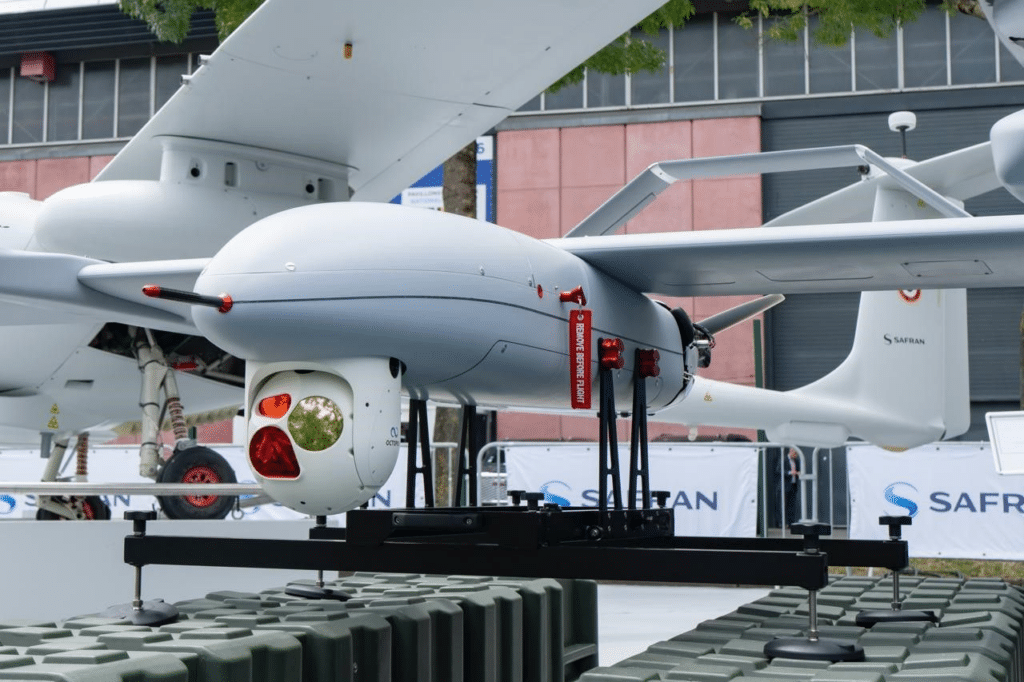Safran Electronics & Defense and Edge Autonomy proudly present Lanner, a new configuration of the Penguin Vertical Takeoff and Landing (VTOL) Uncrewed Aircraft System (UAS) during the exhibition Eurosatory 2024. The Lanner configuration is based on the field-proven Penguin UAS platform and has been specifically modified to meet the requirements of the SDTL (Light Tactical Drone System) program for the French armed forces.
In this configuration, the Penguin drone can address multiple missions through a simultaneous dual payload capability, including Electro-Optical/Infra-Red systems, electronic warfare (detection of radio signals or jamming for example), radar, and ammunitions. It can thus carry out land and maritime intelligence, surveillance and reconnaissance missions.
“We are excited to partner with Safran Electronics & Defense to offer a world-class UAS to the French armed forces”, said Josh Stinson, Chief Growth Officer for Edge Autonomy, “The Lanner configuration capitalizes on the field-proven capabilities of Edge Autonomy’s Penguin UAS along with Safran’s system expertise in optronics, PNT (position, navigation, and timing), UAV airworthiness, and mission systems.”

